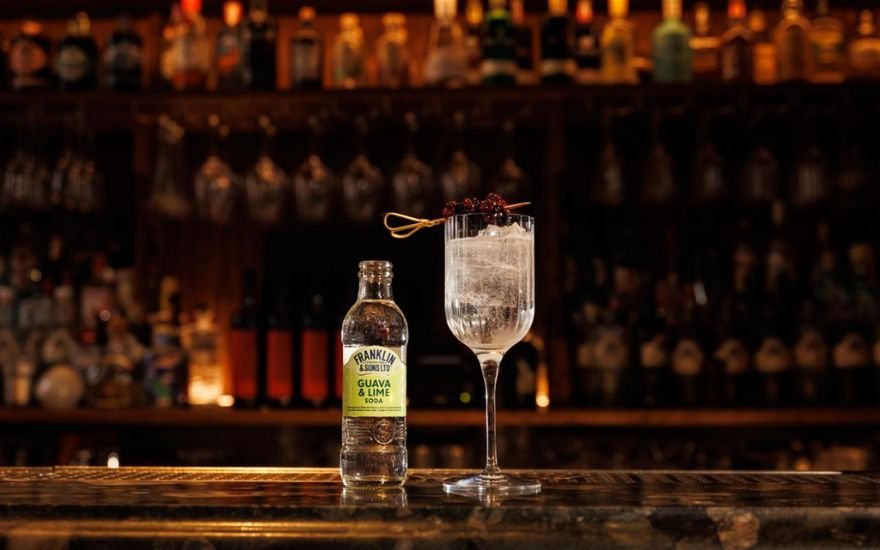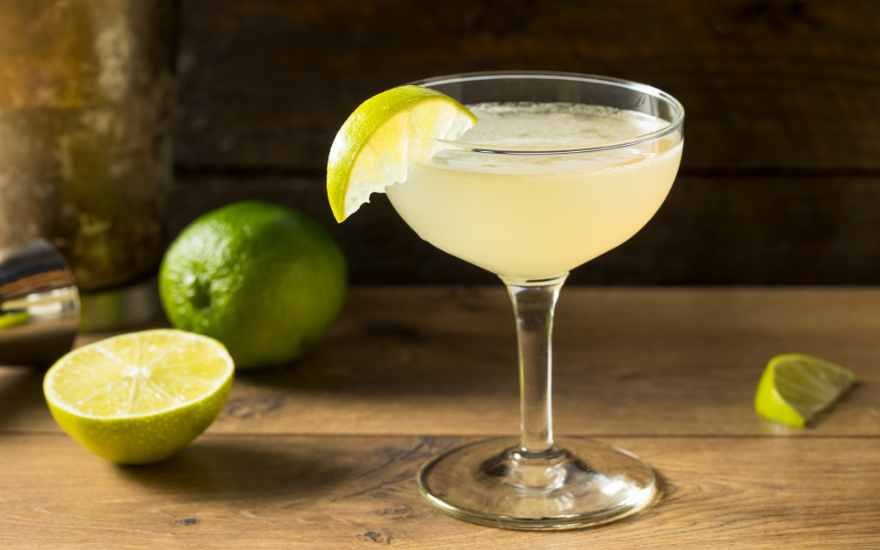Globally, cocktail culture is in a magnificent place, with many bars having gorgeous menus listing many alcoholic and non-alcoholic concoctions. But, in reality, some of the non-alc options are... terrible. It can be so difficult when you want a night on the town with friends and loved ones to have a delicious drink when you aren't drinking alcohol. Too often, bartenders think they can slap a syrup and a soda together and create a "good enough" non-alcoholic option. What so many fail to realise is "good enough" is rarely that. Syrupy sodas can get exhausting, making it feel like a full night of sipping sugar. Even mocktail menus can rely too heavily on simple elements like a flavoured syrup to carry the entire drink through to the guest. For people who are choosing not to drink on a night out, drinks options can range from, at best, undeniably underwhelming to, at worst, a cloying cluster. With a few tips and a little ingenuity, however, navigating a non-alcoholic night out will be easier and yummier than it seems. Here’s how:
Craft sodas
Some of the later ideas will take a little explaining, a little innovation, some luck, and a fair bit of social bravery to help the staff combine the ideal non-alcoholic drink. This first option, however, is easy. It's an incredible saving grace that simplifies everything if the establishment carries craft sodas. Craft soda brands are mixing up mocktails in a bottle. Obviously, craft sodas vary in quality and sweetness which will have to be navigated with caution. Franklin & Sons creates a range which encompasses all of the favourites like Dandelion & Burdock, Grapefruit, and Rhubarb Lemonade. Not only do they make delicious flavoured soda waters that could stand up to the best-selling global competitor, they also have beautifully made classic rich soda options.
TOP-TIER: Franklin & Sons Peach & Mango
Brand new to the UK market, this is flying off the shelves as the expression of these two flavours together is nothing short of harmonious. The Franklin & Sons craft sodas come in a canned and bottled range and are a great blend of not-too-sweet and full of flavour. The Peach & Mango Soda is transportative and tropical. There aren't many products on the market that can take either peach or mango as a flavouring and create a balanced beverage - much less both. In any good beverage, excellence lies in balance - the balance of sweet and sour, the balance of carbonation intensity, and the balance of all the flavours together. The Franklin & Sons Peach & Mango Soda is perfectly adjusted in all of these aspects. An impressive burst of fruity flavour, without overwhelming your taste buds so much that you won't be able to have another. There are a lot of great craft sodas on the market, but this one is at the top of the list to keep the fun flowing and the flavour fantastic.
Soft Spritzes
With a new non-alcoholic spirit or bottled mix coming out seemingly every day, it's getting easier and easier for bartenders to combine flavours and add in some soda water for a non-alcoholic cocktail. The problem that becomes very obvious very quickly, is taste. Commercial non-alcoholic spirits are often trying to replicate the taste of a specific alcohol, the burn of the alcohol, or the texture the botanicals provide. For people who aren't seeking a replica of the alcohol experience, the desire asks for something far less sweet than a sugary soda and more balanced with experimentation and work. Enter: the non-alcoholic bitter. These beverages, popularised from Italy, are creeping their way into stores in the UK and the US. They have everything a delicious mocktail needs: time-tested recipes, balanced sweet and bitterness for complex flavour, and packaged in an adorable glass bottle. Though not the most common thing to see in a restaurant or bar fridge, most bars and restaurants can get them quite easily. While there are many different options, the cream always rises to the top:
TOP-TIER: Dandelion & Burdock Soda + Pineapple & Almond Soda
Dandelion & Burdock is a classic UK blend that wouldn’t necessarily be a staple in other countries. But the flavour is strong, balanced, and balances the bittersweet expertly. Those not used to bittersweet drinks might not enjoy it upon first try. For anyone with a lot of experience drinking spritzes - or any bittersweet drinks - adding an extra pop of jazziness via a craft soda water is ideal. Mixing in the Pineapple & Almond Soda in equal amounts to the Dandelion & Burdock will open up the flavour and stretch the enjoyment time making a lasting spritz experience with a depth and multitude of flavour. A lot of great cocktail bars have bottles of Franklin & Sons stashed away, but if they don't, they can easily get it upon request from a guest. And any kind-enough server or bartender won't mind combining two into one.
.001% Mixes (approximately)
If there's a hard rule for avoiding all alcohol, entirely, without exception, under any circumstances, this section won't be useful. However, if you're okay with trace amounts only measurable in minute scientific terms, a whole new world opens up with bitters and tinctures. As an industry rule, when a guest expresses they aren't imbibing in alcohol, staff respectfully avoid bitters and tinctures as they are alcohol based. However, the creative flavour landscape changes entirely if a guest says, "I'd like something non-alcoholic, but bitters and tinctures are okay!" With bitters being the spice rack of the mixology world, a whole cupboard of combinations await that one simple caveat.
TOP-TIER: Guava & Lime with Honey and Bitters
The Franklin & Sons sodas are delicious all on their own, but the experience can be maximised with a few additions to the full flavour already in the bottles. Utilising the spice rack of the drinks world, bitters can change and add complexity to many low-almost-no-alcohol drinks. The honey will accentuate the Guava richness, the bitters work perfectly with the lime, and the lime wedges will add extra zing to the delightful bubble structure across the whole Franklin & Sons portfolio. This cocktail - a loose adaptation of the Australian sensation “Lemon Lime Bitters” - will zhuzh up your night out instantly. Traditionally, imbibers haven't ever had more than two dashes of bitters, but this 8 dash recipe brings an unbelievable flavour bomb to the combination below. But, also, everything mentioned above would be delicious with a few dashes of bitters.
Ingredients:
3 lime wedges muddled
1 bottle Franklin & Sons Guava & Lime Soda
15 ml honey
8 dashes aromatic bitters
Method:
Combine all ingredients and add ice.
Bar programs are realising the growing demand for thoughtful, delicious non-alcoholic options. Finding or requesting craft sodas or soft spritzes or asking for a drink with bitters to create a balanced, flavorful drink without alcohol doesn't have to be a challenge. With the right ingredients and a bit of courage to ask the staff, non-alcoholic beverages can offer just as much complexity and enjoyment as their boozy counterparts. These options make it clear that alcohol-free nights out can be just as delicious and memorable. All it takes is a little exploration and openness from both bartenders and guests to elevate and enhance the non-alc experience. Cheers to a vibrant, flavourful night out—now available with more flavour!
For more info check out these non-alcoholic options too.
By Zach Sapato






















